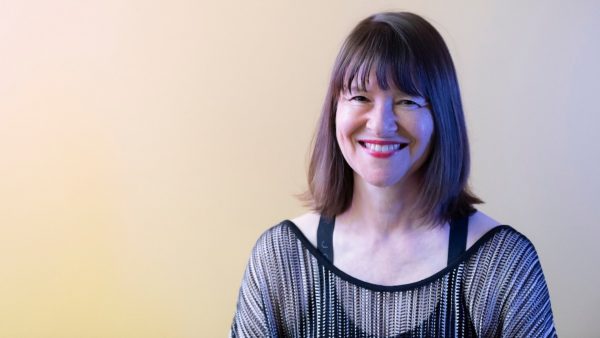Rising Festival 2024
Founder Lucy Guerin Inc
Interview by Chris Duncan
Award-winning choreographer Lucy Guerin was born in Adelaide, Australia, and graduated from the Centre for Performing Arts in 1982 before dancing with Russell Dumas (Dance Exchange) and Nanette Hassall (Danceworks). Guerin moved to New York in 1989 for seven years where she danced with Tere O’Connor Dance, the Bebe Miller Company and Sara Rudner, and began to produce her first choreographic works.
This week, Chris Duncan had a chance to catch up with Lucy to discuss One Single Action which will be part of RISING Festival 2024.
What inspired the concept for “One Single Action – In an Ocean of Everything”? How does this work relate to or diverge from your previous productions like PENDULUM (RISING, 2021) and NEWRETRO (2023)?
Lucy Guerin: The start of the idea for One Single Action was asking myself what next? What interests me? How is the world affecting me? I was a bit confused about what my next work would be after the very clear ideas of PENDULUM and NEWRETRO – and being pulled by many influences and conflicting ideas none of which were taking hold. So, the idea of a decisive, unequivocal action to cut through a sea of doubt was very enticing. But through the process of making the wok this emphatic act revealed other concerns around extreme actions and their outcomes: destruction in the name of ideology, and what is left after that action takes place. I recognise doubt as a very important aspect of being human and an artist, but I was struggling to find that sweet spot between questions and conviction where we can move forward. So the work grew from a personal feeling of unease into a reflection on the state of the human condition and our desire to take action to create something better.
Could you describe the choreographic process for this production? How did you approach creating movement that captures both conflict and harmony between the two dancers?
Lucy Guerin: I began by making a long phrase of movement where the two dancers carry a hammer between them. I wanted the dancing to keep shifting, never settling into one thing, like constant edits. I made very short snatches of movement, just a few seconds, and then as I made the next move, I tried to react to what came before. These contrasts of dynamics, shape, expression, rhythm and speed built up a complex, quite erratic dance that reflected the excess and overload of the contemporary world.
The production explores themes of chaos and decisive action. How do these themes manifest in the choreography and overall staging of the piece?
Lucy Guerin: The work contains a central decisive act which I don’t want to give away here, but it involves a hammer. Before this event the pathway of the dancers maintains a diagonal trajectory from upstage to down stage and they work together to achieve their common goal. After the event, their world is fragmented. They have destroyed something and are faced with the task of rebuilding which ultimately divides them. The idea that destroying something to allow new growth is very seductive. But in this case, it results in the performers losing their connection to each other and their direction and purpose.
The description mentions an attempt to “interrupt the acceleration of our times and pause the relentless scrolling of their thoughts.” Can you elaborate on how contemporary issues like information overload and digital interference influenced the narrative and choreography?
Lucy Guerin:I feel a responsibility to keep in touch with everything that is going on in my community and the larger world (which I can’t) and to keep up with all the platforms and technology that we need to engage with to stay relevant (which I also can’t. Though I did ask ChatGPT what a good name for this work was, but it was not helpful). I am not alone here. There is a huge adjustment going on in how we connect, and it doesn’t always feel positive. Our desires in relation to the excess of production, lifestyle and information can be overwhelming. The movement in the first half of the work is a physical manifestation of our complexity of thought—how we don’t think in cohesive narratives, but in disjointed, reactive bursts—which is compounded by information overload.
Amber McCartney and Geoffrey Watson are featured prominently in this work. How did their particular skills and styles influence the choreography? What was the collaborative process like with them?
Lucy Guerin: Before I started the work I had a strong feeling that these two dancers would make a compelling duo. This is the first time I have made a duet with a man and a woman. It’s something I’ve always steered clear of as the immediate stereotypes it evokes always seems limiting. But with these two, I felt I could speak about something less obvious. Their relationship could go beyond attraction and repulsion. They are two co-conspirators who try to achieve something together at all costs. They both have a really compelling and unique presence, but they are almost opposites in their approach to movement. Geoffrey is quite explosive in his approach and Amber is extremely precise and detailed. This has really influenced the ideas of the work and the dancers move between finding common ground and expressing their own personal style of movement. We worked on tightly choreographed steps to counts, and also on individual improvisations that grew out of prompts from me and a search for a particular ‘tone’ to the stage. The dancers are always an inspiration for me when I’m creating a new work.
The performance traverses a “narrow path” through “fragmented terrain.” Can you discuss the set design and how the physical space interacts with the dancers’ performances?
Lucy Guerin: The first half of the work repeatedly traverses a clear diagonal pathway towards a suspended object. The lighting fixtures are lowered to create a sense of tension and pressure. In the second half the space opens up and the dancers’ direction is less clear. They are somewhat lost after they have achieved their common goal and drift apart.
What symbolic elements are incorporated into the dancers’ movements, and how do they contribute to the overarching message of the production?
Lucy Guerin: The movements in the work are rarely symbolic in themselves in a gestural way, but the erratic nature of the dance material symbolises the onslaught of information that humans have unleashed. Hammers play a large part in the work as symbols of both destruction and rebuilding, so the action of the hammer is repeated throughout.
What kind of experience do you hope the audience takes away from “One Single Action”? How do you envision the audience’s role in interpreting the performance?
Lucy Guerin: I really look forward to the audience’s reaction. I don’t need to control or predict their response; that is almost like the final stage of the work’s creation. Sitting in an audience and watching the piece take place on a stage on opening night is the moment of separation for me. I am no longer part of it, and I see it differently. The audience’s role is vital, and I hope they connect with the performers and the work and that my intentions are clear. Dance is a form that invites multiple interpretations and I welcome all of these.
Were there any particular technical challenges you faced while developing this performance, especially with regards to integrating movement with thematic complexity?
Lucy Guerin: There is a huge technical challenge in one of the set elements which I don’t want to give away!! At the time of writing this I still don’t know if it will work but I’m very excited for it. Integrating the movement with the thematic is an interesting question. They are so linked and influence each other in a very fluid way for me. Sometimes this gets confusing. I might get carried away by some aspect of the movement which feels very exciting, and I can try to bend the concept to incorporate it. This can send me on a completely different trajectory and changes the nature of the show. But ultimately, I really strive for clarity, for the completeness and integrity of the work. This results in some harsh editing sometimes.
How does “One Single Action” influence or set the stage for future works? Are there themes or elements from this production that you wish to explore further in your upcoming projects?
Lucy Guerin: One Single Action involves many ongoing interests that will continue in future works. I am really interested in how the intersection of the space, music, movement, timing, lighting and other elements come together on the stage to create a tangible feeling for the watcher without the foregrounding of obvious indicators of meaning like acting or storytelling. The stage for me is a place where I want to experience the unfamiliar, not in an alienating way but as a place of personal discovery and expansion. I have worked on this in One Single Action and will continue this in future works. I will also continue to work with improvised movement for the dancers in concert with detailed choreographed movement. This describes for me both a prescribed, controlled element and a sense of agency and freedom.
Lucy Guerin Bio:
In 2002 she founded Lucy Guerin Inc (LGI) in Melbourne, to support the development and creation of new works with a focus on challenging and extending the discourse and practice of dance and building a vibrant community of dance artists.
Guerin’s works have merged with film, words, music, design, and visual art in collaboration with many other artists. New productions are generated through an experimental approach to the creative process. Guerin works towards creating small societies in her productions that devise their rules from the human body’s relationship to space, rhythm, and other people. The dancers are her primary collaborators.
For more information and tickets, visit the RISING festival website https://2024.rising.melbourne/














